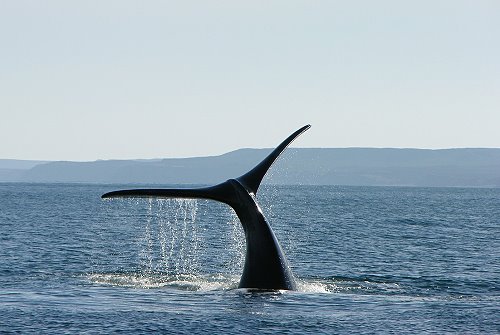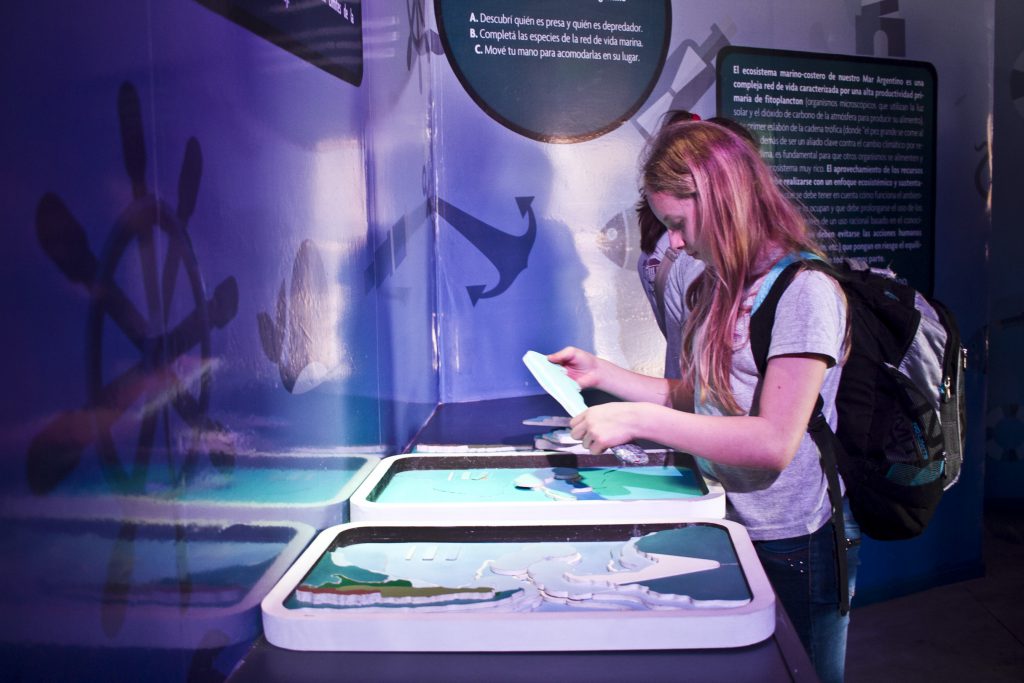 Argentina has one of the largest continental shelves on the planet an important marine food supplier and carbon dioxide sink through abundant primary productivity. A political cycle is closing in the country, after the recent elections with an extremely young winning party and a new president who proposes a paradigm shift in the administration. On 7 and 8 November 2023 some outgoing politicians, with the participation of professionals in State institutions and the help of NGOs, presented an assessment of what has been done so far in terms of marine sustainability in the context of the "First Congress of the Pampa Azul Initiative" in Mar del Plata, Argentina's fishing city par excellence.
Argentina has one of the largest continental shelves on the planet an important marine food supplier and carbon dioxide sink through abundant primary productivity. A political cycle is closing in the country, after the recent elections with an extremely young winning party and a new president who proposes a paradigm shift in the administration. On 7 and 8 November 2023 some outgoing politicians, with the participation of professionals in State institutions and the help of NGOs, presented an assessment of what has been done so far in terms of marine sustainability in the context of the "First Congress of the Pampa Azul Initiative" in Mar del Plata, Argentina's fishing city par excellence.
Pampa is a word of Quechua origin that means plain. In Argentina, this term has historically been used to refer to the rich agricultural and livestock lands, mainly in the Province of Buenos Aires, but also in other jurisdictions. The lifestock and agricultural sectors have historically played the greatest role in the economy and culture. This is how the expression Pampa Azul arises in the form of a metaphor, trying to attract some more attention to the productive Argentine Sea.
The Pampa Azul project seeks to join forces to explore, know and understand the immense marine platform of the South American country, to be more effective in the protection and conservation of its resources and its rich biodiversity. This project is an inter-ministerial initiative of the Argentine State, with its own budget by law, with the participation of research institutes and universities as well as the Naval Prefecture and the Argentine Navy. Initiated to also affirm the countries influence over its Exclusive Economic Zone it has evolved now also inviting e.g. companies dedicated to fishing, space exploration, shipping industries, and NGOs.
Since its inception in 2014, the Pampa Azul Initiative has been proposed as a state policy, seeking to transcend changing governments. Its objectives are to promote the advancement of scientific knowledge, drive technological development and foster sustainable innovation in the South Atlantic region. It also aims to inculcate a culture of the sea in society, promoting the sustainable use of marine ecosystems and strengthening the growth of an associated national industry, for example, through the Blue Schools programme. This programme aims to raise awareness among young people who are doing their secondary studies about the importance of all disciplines related to the sea.

In recent years, the initiative has not only involved actors from the exact and natural sciences but also from the social and humanistic sciences, thus reinforcing the commitment to the SDGs of the 2030 Agenda. Mention should be made of the creation of the Inter-Agency Centres for Marine Strategic Issues (CITES), as well as multidisciplinary laboratories, shelters in the Antarctic territory, mobile oceanographic laboratories, and multidisciplinary research stations.
Gustavo Lovrich, principal researcher of CADIC-CONICET, highlighted the importance of the creation of the Namuncurá-Banco Burwood and Yaganes Marine Protected Areas in the previous decade, as well as the 16 scientific research campaigns carried out which allowed progress in the inventory of species, the knowledge of oceanographic processes and the structure of the food web.
But perhaps the main challenge of the Pampa Azul project, which makes it valuable and innovative, is its vision of collaborative and synergistic work between all sectors involved with the sea, that is, both governmental and non-governmental institutions, with the purpose of becoming a vector of development.
Among the technologies discussed during the congress were coastal radar monitoring, unmanned marine vehicles, the naval and ocean buoy industry and marine energy, among others. But the satellite deserves special mention because the next mission of the Argentine space agency, the National Commission for Space Activities (CONAE), will be focused on the sea. The satellite is called SABIA-Mar, an acronym for Satellite of Applications Based on Environmental Information of the Sea. Carolina Tauro, principal researcher of the mission, described the characteristics of the project. Its function will be to provide information on the colour of the Argentine Sea, but also of other seas on the planet. It will carry optical sensors for 15 bands in the visible and near-infrared spectrum, between 412 and 1610 nm, as well as a panchromatic high-definition camera from 400 to 700 nm. It will have a sun-synchronous polar orbit, with a revisit time of two days and a lifespan of five years. Already in its final stages of construction, it is expected to be launched between the end of 2024 and the beginning of 2025. Mundus maris member Marcelo Lino Morales Yokobori who attended the event has already participated in training to make use of the sensors' images for marine research.
 Fishing activity was also one of the important topics discussed. Argentina landed some 790,000 tonnes in 2022, equivalent to $1.8 billion, indicating its economic importance to the country. Concern was expressed about the common hake (Merluccius hubbsi), whose northern stock shared with Uruguay is not recovering despite reduced catches. But also, by pink cusk-eel (Genypterus blacodes) and narrownose smooth-hound (Mustelus schmitti), species compromised because they are below the recommended biological level.
Fishing activity was also one of the important topics discussed. Argentina landed some 790,000 tonnes in 2022, equivalent to $1.8 billion, indicating its economic importance to the country. Concern was expressed about the common hake (Merluccius hubbsi), whose northern stock shared with Uruguay is not recovering despite reduced catches. But also, by pink cusk-eel (Genypterus blacodes) and narrownose smooth-hound (Mustelus schmitti), species compromised because they are below the recommended biological level.
Artisanal fishing also had its place, especially when Ana Parma, principal researcher of CESIMAR-CONICET, presented a survey conducted on small-scale fisheries in Argentina, which is synthesized in the book "La pesca artesanal en Argentina. Caminando las costas del país" (Artisanal fishing in Argentina. Travelling along the coasts of the country") launched in 2022 and which is free to access here. It describes the species and fishing gear used on the coasts of the five Argentine provinces with a maritime coastline.
Another feature to highlight in the Pampa Azul Initiative is that it approaches its work based on Priority Geographic Areas (PGAs). For this reason, in 2014 these PGAs were defined, whose delimitations are based on their oceanographic characteristics, the importance of their ecosystems and the potential impact that human activities may have on them. This seeks orderly spatial planning, with an emphasis on the protection of genetic resources.
That dovetailed with another event focused on the fight against plastic pollution, this time on November, 16th in the White Hall of the Honorable Chamber of Deputies, in Buenos Aires. The different commissions tasked with catering for public health and sustainable development had cooperated for years on the growing issue. Nevertheless the Commission of Maritime, River, Fisheries and Port Interests, the Commission of Natural Resources and Conservation of the Human Environment, and the Commission of Environment and Sustainable Development had agreed on standards but the House of Deputies (Parliament) did not adopt their advice. The research on contaminants e.g. in the Paraná river system undertaken by Marcelo and his research group shows no improvement. Among the pending issues are the management of post-consumer packaging and packaging, the management of waste electrical and electronic equipment, the management of waste fishing gear, the management of end-of-life tyres, the elimination of VAT on the purchase and sale of recyclable post-consumer material, plastics and chemicals management, and apparel and plastics management.
Work on documenting the hazards and advocacy to put an end to recover a healthy environment for people and marine ecosystems is carved out, not only for Mundus maris.








